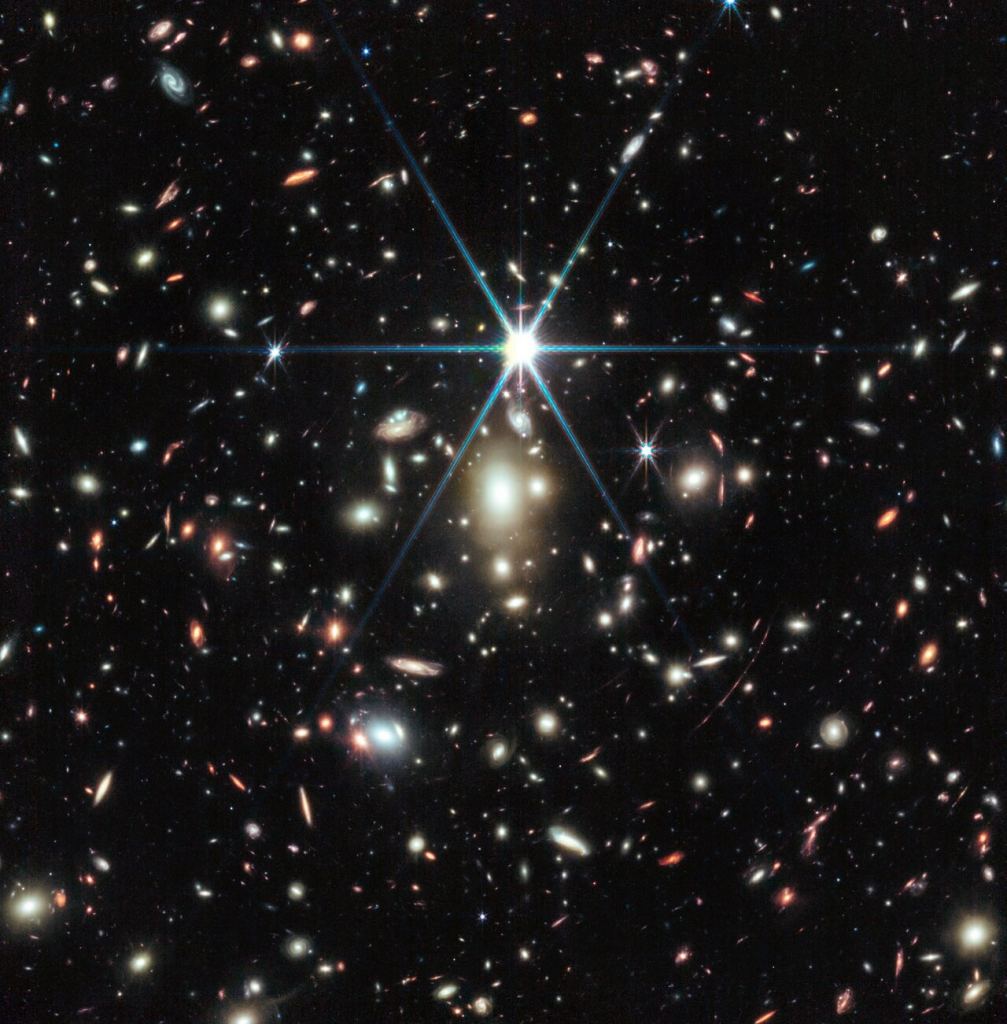In March 2022, astronomers announced the discovery of the farthest known star via an image taken by the Hubble Space Telescope. They named it Earendel, after the old English name for “morning star”. Now, JWST’s Near-infrared Camera (NIRCam) and its NIRSpec spectrometer have taken a look at the same star and revealed more details about it.
Earendel appears to be a massive B-type star. That puts it on the Main Sequence evolutionarily, which means it’s a hydrogen-burning star. Compared to the Sun, it’s twice as hot and a million times more luminous.
What astronomers suspect is that this star, like many other massive stars like it, may have a companion. However, they lie so close together and we’re seeing them at such a great distance (around 13 billion light-years), that it’s tough to make them out separately. However, the spectra of this star (i.
e. the colors of its light) hint that a companion does exist. Further studies using the magnification supplied by the gravitational lens as well as more detailed observations using NIRCam on JWST should help them tease out the companion.
The light we see from Earendel was first emitted from that star only about 900 million years after the Big Bang. The gravitational lens that revealed it is magnifying Earendel by a factor of 4000. Now, astronomers want to know if it’s among the first generations of stars ever to shine.
If so, its spectra would reveal its chemical makeup to be mainly hydrogen and helium. If it’s a second-generation star, then the properties of its light would show other elements, too. Other examples of this type of blue supergiant star are Rigel and Beta Centauri.
Remove All Ads on Universe Today Join our Patreon for as little as $3! Get the ad-free experience for life This star’s host galaxy appears to us as a long crescent-shaped smear of light. That smearing is caused by gravitational lensing from a massive galaxy cluster called WHL0137-08. The NIRCam view shows quite a bit of detail about this distant galaxy.
There are creches where the next generations of stars are being born. Some of those stars are quite young, less than five million years. The galaxy also contains star clusters well along in their evolution.
One of those clusters is around 10 million years old. It may still exist in the modern Universe. The cluster gives astronomers some interesting clues about the globular clusters that swarm our own Milky Way today.
Some of them could have formed around the same time as the distant clusters in WHL0137-08. Interestingly, the image from JWST shows more detail about the lensing effect on the distant galaxy. Earendel itself lies along a “ripple” produced by the lensing.
That’s how it appears separately from the smeared image of its host galaxy. In addition to the NIRCam view of this scene, JWST’s infrared spectrometer (NIRSpec) took data. It gives astronomers more details about the exact distance to Earendel and its home galaxy.
JWST has detected other distant stars using its infrared-sensitive instruments. So far, Earendel remains the record-holder for distance. But, there are many more observations to be made.
Eventually, astronomers hope to find one of the Holy Grails of astronomy: the very first stars ever to shine. Those earliest objects could have appeared as early as only 100 million years after the Big Bang. They were likely very massive and extremely luminous.
As they began to appear out of the dimness of the Cosmic Dark Ages, they heated and ionized the gases around them. As they evolved and died, they produced heavier chemical elements in their hydrogen-burning cores. When they died, they spread those materials out to space, seeding new generations of stars, and ultimately planets.
The evidence of their lives and lifestyles will tell us a great deal about all those conditions in the infant Universe, the distribution of matter (including dark matter), and the eventual formation of galaxies in the early epochs of cosmic time. Earendel and the Sunrise Arc in the galaxy cluster WHL0137-08 Galaxy Cluster WHL0137-08 The First Stars in the Universe (PDF).
From: universetoday
URL: https://www.universetoday.com/162741/jwst-turns-its-gaze-on-the-farthest-known-star-earendel/



